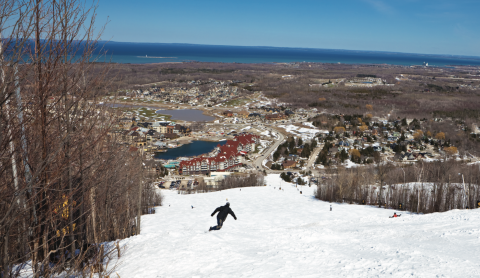
Small vertical, big results: A 750-f00t-high ridge in Ontario has spawned many of Canada’s Olympic and World Cup champions. By Lori Knowles
Creative Canadian marketers call it the Blue Mountains but locals know it as the escarpment—a rim overlooking Georgian Bay, a geological landmark of Southern Ontario with a vertical drop of 750 feet and a 2.5-mile-long strip of steep ski runs that have produced some of the world’s greatest ski racers: 1980 Olympic bronze medalist Steve Podborski; four-time Olympian Brian Stemmle; three-time World Cup downhill winner Todd Brooker; and six-time World Cup ace Laurie Graham. An impressive number of Canada’s top competitors spent their formative winters along this ridge: riding tows, dancing through gates, schussing icy chutes.
It started in the early 20th century, as it always does, with an intrepid group of men and women wearing laced boots and gabardine suits. Recognizing the ski potential of a snowy escarpment 100 miles (160 kilometers) north of Toronto near Collingwood, the Toronto and Blue Mountain ski clubs made their mark. Through the 1920s and ’30s they built ski jumps and cut runs. History books say a fox-hunting trumpet called skiers to the slopes; horses hitched to sleighs carried them to the runs. With names like Wearie, Gib, Nipper and Hans, these pioneers persevered...
